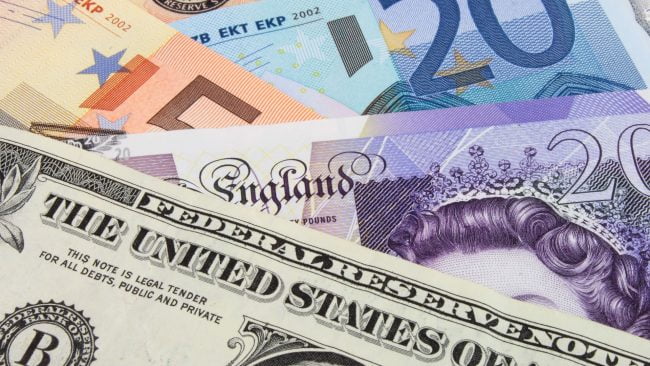The currency of the United Kingdom is the British pound (British pound in English), which is represented by the currency symbol £. This symbol has its origin in the letter L, which in turn comes from the abbreviation from Latin pound (LSD).
Below you have an index with all the points that we are going to deal with in this article.
Article Index
- 1.
- 2.
- 3.
- 4.
Bills and coins
Its ISO 4217 code is GBP; sometimes we can find the abbreviation UKP, but it is incorrect. The official name, that is, pound sterling, is used only in formal contexts and when it is necessary to use it to differentiate it from the currency of other countries.
It is usually given the name of british pound Or simply, sterling in less formal contexts. One pound sterling equals one hundred pence. There are £ 5, 10, 20 and 50 notes.
As for the coins, there are 1p, 2p, 5p, 10p, 20p and 50p (p = "penny" in the singular, which is used for the 1p coin; "pence" in the plural, which is used for the rest of pennies). Also, there are £ 1 and £ 2 coins.
Although the usual design of the pound sterling coins is the one that can be seen in the image, there is another design on the back of some coins, in which we can see parts of the british coat of arms (in English, Royal Coat of Arms of the United Kingdom). If we put all the sterling coins together as a puzzle, the result will give rise to the English coat of arms.
UK currency vs other currencies
The British pound is the fourth most traded currency on the world market, after the euro, dollar and japanese yen. After the euro became the currency of several countries, the pound sterling became the oldest currency in the world still in use.
After the US dollar and the euro, the British pound has the third largest share of reserve currencies internationally. Below we show the current equivalent value of one pound sterling in the currencies of other countries:
- £ 1,00 = 1,28 euros (EUR)
- £ 1,00 = 1,51 US dollars (USD)
- £ 1,00 = 94,41 Indian rupees (INR)
- £ 1,00 = 1,86 australian dollars (AUD)
- £ 1,00 = 1,79 canadian dollars (CAD)
- £ 1,00 = 13,01 Argentine pesos (ARS)
- £ 1,00 = 1,54 Swiss francs (CHF)
- £ 1,00 = 4,04 Brazilian reals (BRL)
- £ 1,00 = 180,68 japanese yen (JPY)
- £ 1,00 = 32,72 Uruguayan pesos (UYU)
- £ 1,00 = 22,23 Mexican pesos (MXN)
- £ 1,00 = 3,65 Colombian pesos (COP)
Brief history
Before what we know today as the British pound, there were small silver coins called sceattas (in singular, sceat), whose name derives from an Anglo-Saxon word meaning "wealth" and is pronounced / she-att-er /.
It is estimated that its origin dates back to the years 730-745. These small coins weighed approximately 1,3 g. Some historians suggest that sceattas they were also the unit of measurement for precious metals at that time.
The word pound comes from the weight of a silver pound coin, known as Sterling silver. From this moment it began to be known as sterling and it was not until the year 1158 that the King Henry II of England (in English, Henry ii) introduced it as currency in the United Kingdom.
At the etymological level, the current term sterling comes from the word sterling, from Old French. At first, the French term became the word bulls in English, which meant "strong" or "firm." Starting in 1560, Queen Elizabeth I introduced the sterling pound that we know today.
Price of the pound sterling
The value of the British pound has always remained high, even after the First World War, when Britain reintroduced the gold-standard, a monetary system that sets the value of the currency based on a specific amount of gold.
The pound was also unaffected during the Civil War. Today, the British pound is no longer related to gold, silver, or any other precious metal. From the early 50s to the late 60s, the pound was constantly under the influence of the US dollar.
With the advent of the euro, both currencies were tried to maintain an average rate of € 1,00 = £ 1,46. This value, although not equivalent, is very approximate. However, this synchronization in the value of the pound and the euro has been losing in recent years, especially since 2006.
This article has been shared 159 times. We have spent many hours collecting this information. If you liked it, share it, please:








